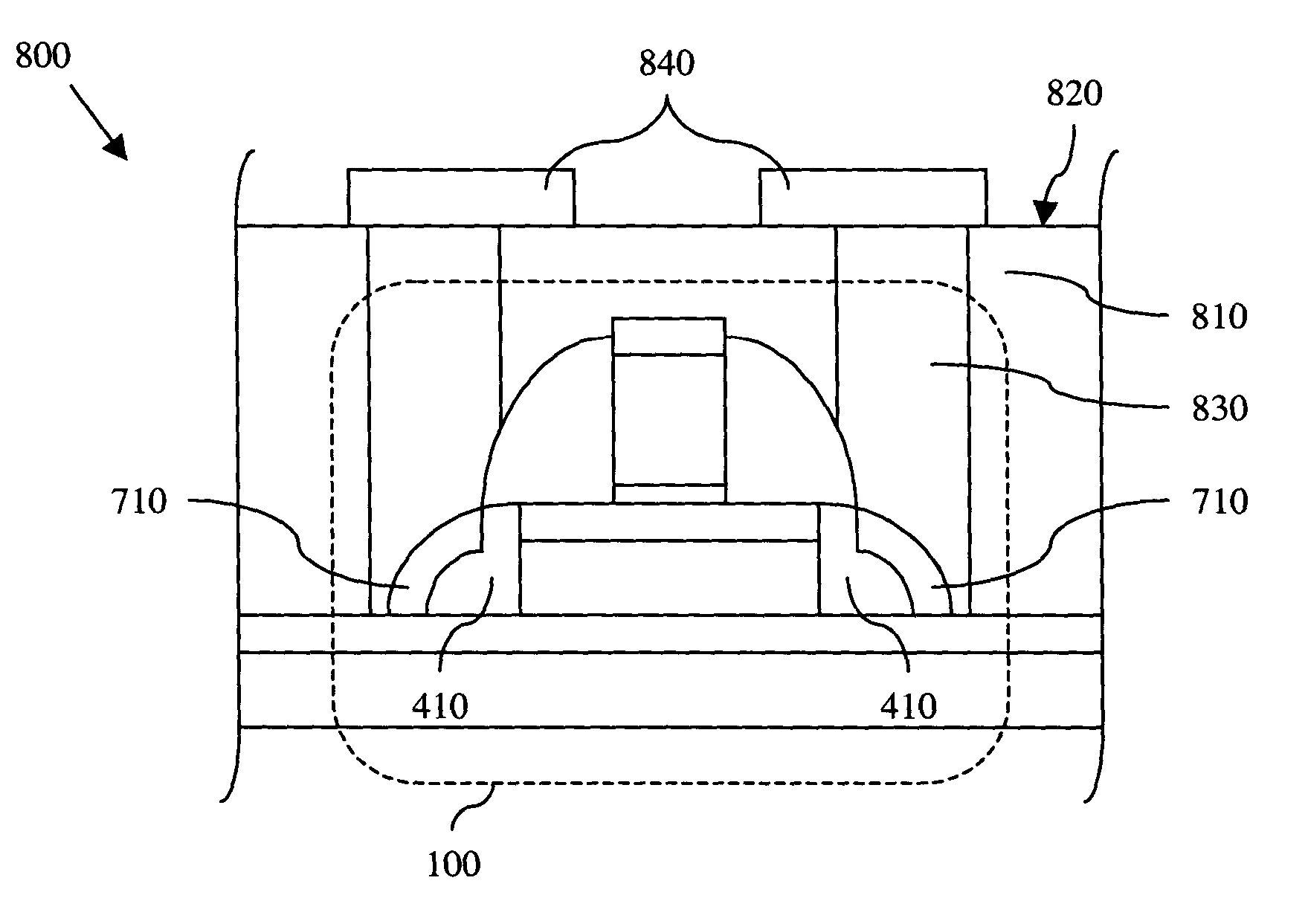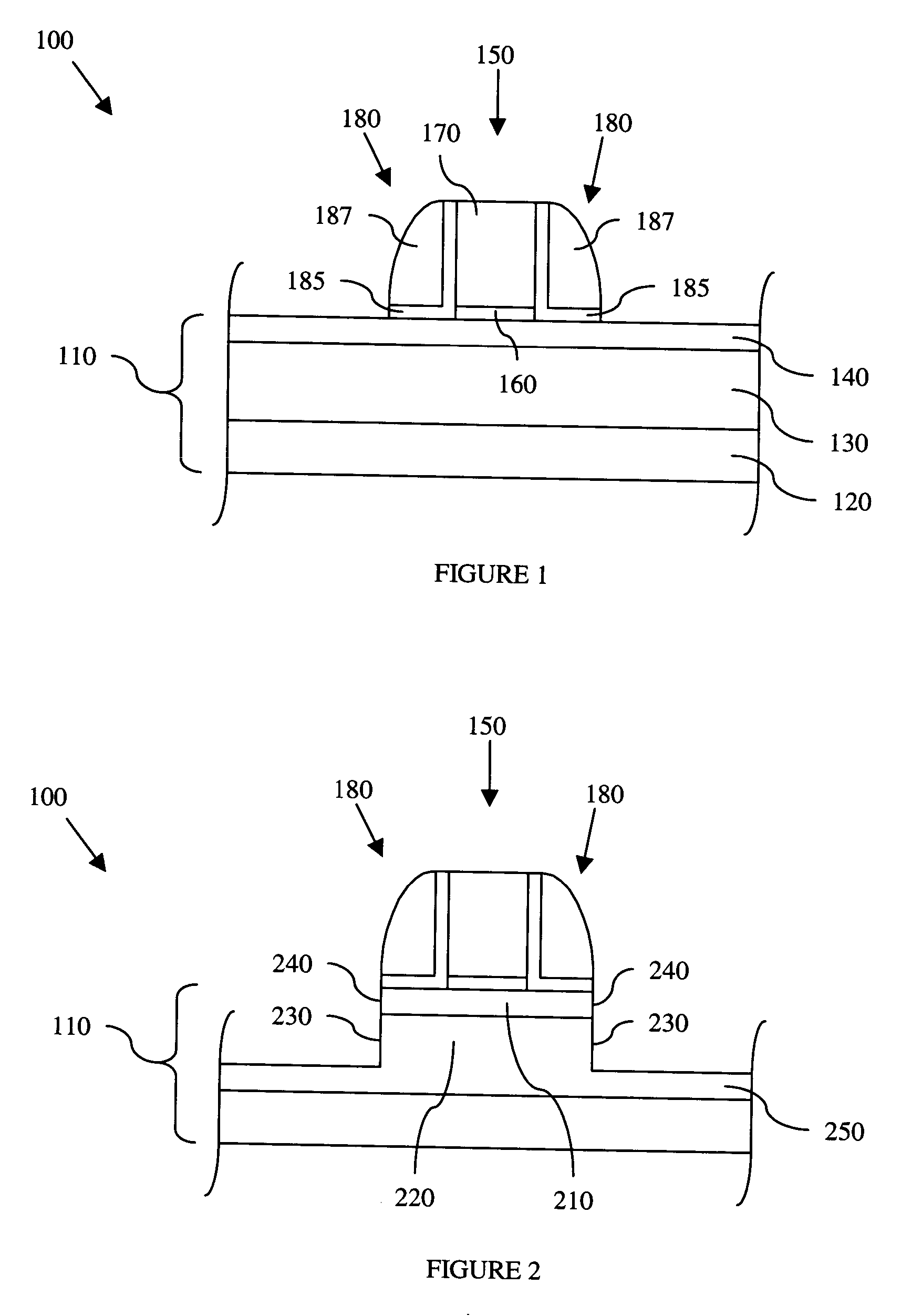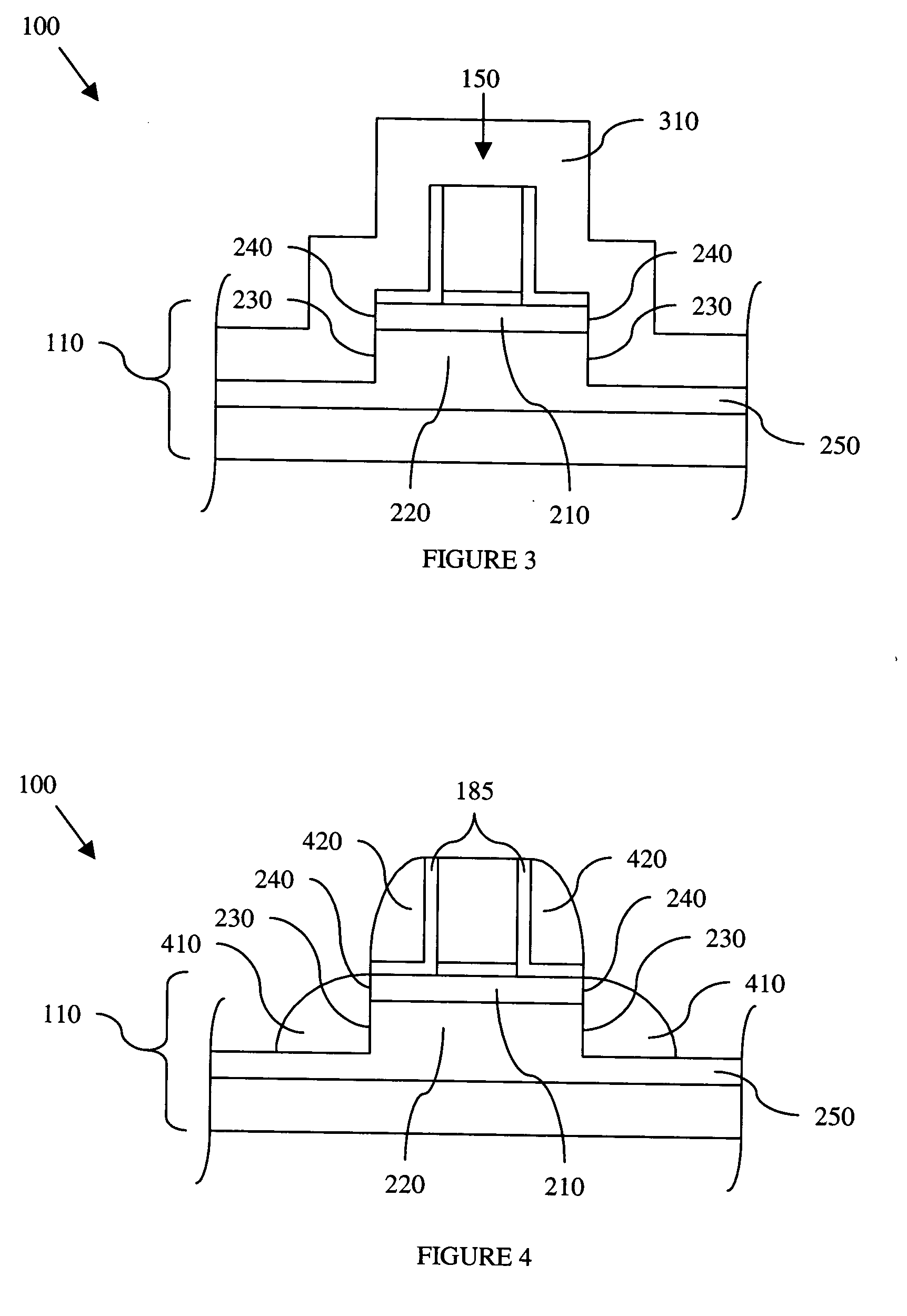Ultra-thin body transistor with recessed silicide contacts
- Summary
- Abstract
- Description
- Claims
- Application Information
AI Technical Summary
Benefits of technology
Problems solved by technology
Method used
Image
Examples
Embodiment Construction
[0016] Referring initially to FIG. 1, illustrated is an elevation view of an embodiment of a semiconductor device 100 in an initial stage of manufacture according to the principles of the present invention. The method of manufacturing the semiconductor device 100 initiates with the provision of a substrate 110. The substrate 110 includes a bulk layer 120, a buried oxide (BOX) or other dielectric layer 130 over the bulk layer 120, and a channel layer 140 comprising silicon and / or other semiconductor materials over the dielectric layer 130. The buried oxide may comprise multiple layers including dielectric layers, such as a silicon oxide layer overlying a silicon nitride layer which overlies a silicon oxide layer, i.e., an oxide-nitride-oxide stack. The channel layer 140 may be doped via conventional processes with boron, for example, if the semiconductor device 100 is an n-channel device or phosphorous, for example, if the semiconductor device 100 is a p-channel device.
[0017] Those ...
PUM
 Login to View More
Login to View More Abstract
Description
Claims
Application Information
 Login to View More
Login to View More - R&D
- Intellectual Property
- Life Sciences
- Materials
- Tech Scout
- Unparalleled Data Quality
- Higher Quality Content
- 60% Fewer Hallucinations
Browse by: Latest US Patents, China's latest patents, Technical Efficacy Thesaurus, Application Domain, Technology Topic, Popular Technical Reports.
© 2025 PatSnap. All rights reserved.Legal|Privacy policy|Modern Slavery Act Transparency Statement|Sitemap|About US| Contact US: help@patsnap.com



